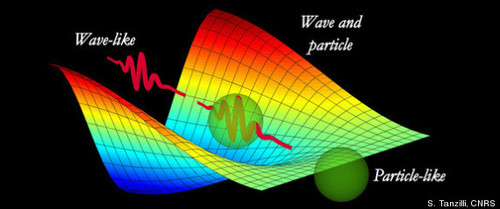Messing with an electron
 An electron, practically at rest is initially accelerated through a potential difference
. It then has a de Broglie wavelength of
.
An electron, practically at rest is initially accelerated through a potential difference
. It then has a de Broglie wavelength of
.
It then gets retarded through and has a wavelength of .
A final retardation through changes the wavelength to .
What is as a percentage?
This section requires Javascript.
You are seeing this because something didn't load right. We suggest you, (a) try
refreshing the page, (b) enabling javascript if it is disabled on your browser and,
finally, (c)
loading the
non-javascript version of this page
. We're sorry about the hassle.
This one depends on the non-relativistic expression for the energy of electrons.
The initial acceleration endows the electron with kinetic energy 100 eV . As a sanity check, classical considerations would predict the speed of such an electron to be 2 × 1 0 0 eV / m e ≈ 5 . 9 3 × 1 0 6 m/s , well below the relativistic regime.
Therefore, we can say that velocity, and therefore momentum is proportional to E . The momentum of an electron is given by λ = p h ∼ 1 / E .
Since we're forming a dimensionless quantity out of all the wavelengths, we can ignore the constants and focus on the 1 / E behavior.
When the electron goes through the retarding potentials, it loses kinetic energy.
Therefore, the quantity of interest can be found as
x 1 x 3 − x 2 = 1 / 1 0 0 eV 1 / 4 9 eV − 1 / 8 1 eV ≈ 3 1 . 7